Category Archives: Socket Programming
Python socket – chat server and client with code example
Socket based chat application In our previous article on we learned about the basics of creating a socket server and client in python. In this post we are going to write a very simple chat application in python that is powered by sockets. The chat application we are going to make will be more like… Read More »
How to Code a simple Telnet Client with Sockets in Python
The telnet client is a simple commandline utility that is used to connect to socket servers and exchange text messages. Here is an example of how to use telnet to connect to google.com and fetch the homepage. $ telnet google.com 80 The above command will connect to google.com on port 80. $ telnet google.com 80… Read More »
How to Code ICMP Ping Flood Program in C with Sockets – Winsock
ICMP Ping Flood A ping flood program sends a large of icmp packets to a remote host to flood the network and system resources on the target system. The target system keeps replying to the icmp packets and its system resources are consumed un-necessarily. In a previous article on we saw how to construct raw… Read More »
ICMP ping flood code using sockets in C on Linux
ICMP Ping Flood Icmp ping flood is a kind of DOS attack that can be performed on remote machines connected via a network. It involves sending a large number of ping echo requests (packets) to the target system such that it is not able to tackle so fast. So the result is that the host… Read More »
How to Code a simple Tcp Socket Server in Winsock
Communication over sockets involves 2 programs running on the same machine or on separate machines across a network. First is a socket server and the other is a socket client. Tcp stands for Transmission control protocol and it is the most common protocol being used for most of the network communication that takes place over… Read More »
How to Fetch Domain Whois Data with Sockets in Python
Whois The whois information of a domain name provides various details like registrar, owner, registration date, expiry date etc. The whois information is provided by the corresponding whois servers of the registrars. The information is available for free and most whois servers run a whois service on port 43 which provides whois data associated with… Read More »
How to Program UDP sockets in Python – Client and Server Code Example
UDP sockets UDP or user datagram protocol is an alternative protocol to its more common counterpart TCP. UDP like TCP is a protocol for packet transfer from 1 host to another, but has some important differences. UDP is a connection-less and non-stream oriented protocol. It means a UDP server just catches incoming packets from any… Read More »
How to Program raw UDP sockets in C on Linux
Raw UDP sockets Raw udp sockets are used to constructed udp packets with a application defined custom header. It is useful in security related network applications. The udp header can be found in RFC 768 and has a very simple structure as shown below. 0 7 8 15 16 23 24 31 +——–+——–+——–+——–+ | Source… Read More »
Raw Socket Programming in Python on Linux – Code Examples
Raw sockets Raw sockets allow a program or application to provide custom headers for the specific protocol(tcp ip) which are otherwise provided by the kernel/os network stack. In more simple terms its for adding custom headers instead of headers provided by the underlying operating system. Raw socket support is available natively in the socket api… Read More »
How to Code Syn Flood Program in Perl with Raw Sockets on Linux
Syn Flood Syn flood program sends out a large number of syn packets to a destination host such that the destination host gets under heavy pressure to reply to all of them and hence consumes huge amount of memory/cpu resources without any real purpose. This causes the services of the remote host to become unavailable… Read More »
Syn flood program in Python using raw sockets on Linux
Syn flood and raw sockets A syn flood program sends out large number of tcp syn packets to a remote host on a particular port number. Syn packets are intended to initiate a tcp connection. However if a large number of syn packets are send without any purpose, then then it would consume a lot… Read More »
Perl Socket programming Tutorial – How to code Client and Server
Tcp/IP Socket programming Sockets enable your program or application to talk to other machines over the network. When you type in google.com in your browser, it talks to google.com over the internet and fetches the webpage. For socket programming we need to use the socket library or api which provides some very simple functions to… Read More »
How to code a port scanner in Perl with Sockets
Tcp connect port scanner in perl A tcp connect port scanner works on the principle of establishing a full tcp connection on a port it wants to check. Therefore a port scanner is quite easy to code, as it just connects to all required ports one by one and whenever a connection is established, reports… Read More »
Udp Socket Programming in Java – How to Code Client and Server
UDP – User Datagram Protocol sockets UDP is an alternative protocol to the more commonly used TCP protocol. It is a connection-less protocol where you directly send packets without have to establish a proper connection. UDP packets have smaller headers compared to TCP headers. Also data communication is faster since no acknowledgement is exchanged for… Read More »
How to Code a Packet Sniffer in Python with Pcapy extension
Pcapy In the previous articles we coded packet sniffers in python using raw sockets. Now lets use the libpcap library for the same. Libpcap is the packet capture library for linux and has wrappers for most languages. In python there are multiple libpcap wrappers like pcapy, pypcap etc. In this article we shall use the… Read More »
How to Code a Simple Socket Client Class in C++
Wrapper class for socket functions The standard socket library in C comes with a lot of functions for every task like connecting, sending data and receiving data etc. However knowing the syntax of all the functions and calling them again and again and in the right sequence could be a bit intimidating. Using a class… Read More »
How to Receive Full Data with recv() Socket function in C on Linux – Code Example
Socket function – recv() If you are writing a network application using sockets in C that communicates with a remote server and fetches data, then you must be aware of the recv function that is used to receive data. The recv function can only receive a specified number of bytes in the response. If the… Read More »
UDP Socket Programming in Php – How to Code Client and Server
UDP Sockets in Php In a previous article we learnt about writing simple server and clients using TCP sockets in php. In this article we are going to use udp sockets for the same. UDP sockets are much simpler to work with since they are connection-less. A udp server just has an socket that waits… Read More »
UDP Socket programming in winsock – How to code Client and Server
UDP sockets UDP stands for User Datagram Protocol and is an alternative protocol to TCP the most common protocol used for data transfer over the internet. UDP is different from TCP in a number of ways. Most importantly UDP is a connectionless protocol. TCP vs UDP In the TCP protocol first a connection is established… Read More »


